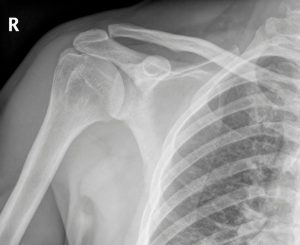If you have ever wondered what makes our bodies work the way they do, then you may be interested in this Blog post about what is the nervous system, and how does the nervous system work … Because it’s the nervous system of our bodies that is primarily responsible for driving how we move, talk, breath and everything in-between!
What is the nervous system?
The nervous system is a complex collection of nerves and other nerve tissues that intertwine and interact with all the other 10 systems of the body. Even though it is found throughout the whole body, it equates to less than 5% of the total body mass, making it one of the smallest systems of the body. This is hard to get your head around when you consider there are billions of nerve cells (aka ‘neurons’) that make up the system. It’s mind-boggling stuff!
The nervous system is made up of two main parts:
- Central Nervous System (CNS)
- Peripheral Nervous System (PNS)
Central Nervous System
The CNS is made up of the brain and spinal cord. The brain is housed inside the skull and connects to the spinal cord through a hole in the base of the skull. The spinal cord runs down the centre of the body and is protected by the spinal column, which is made up of numerous vertebrae (the bones of the spine). The main roles of the CNS include:
- Processing incoming sensory information from inside and outside the body
- Sending out commands to the muscles to contract
- Sending out commands to glands to release hormones
- Acting as a control centre for emotions, thoughts and memories
Peripheral Nervous System
The PNS is made up of all the other nervous tissues that sit outside of the CNS. The nerves that travel from the brain (i.e. cranial nerves – of which there are 12 pairs) and spinal cord (i.e. spinal nerves – of which there are 31 pairs) to the rest of the body and back again make up a large part of the PNS. There are also various other types of nervous tissue that form this system.
The PNS is further broken down into the following parts:
- Somatic Nervous System (SNS) – Also referred to as the ‘Voluntary Nervous System’ which controls the voluntary movements of the body.
- Autonomic Nervous System (ANS) – further broken down into sympathetic and parasympathetic divisions (the parts of our nervous system that control our ‘fight or flight’ and ‘rest and digest’ responses, respectively)
- Enteric Nervous System (ENS) – relating to the gut
All the above subdivisions of the PNS have a sensory part which transmits information to the brain and spinal cord, and a motor part which transmits information to the body to drive an action. For example, the motor part of the SNS drives contraction of our skeletal muscles allowing our bodies to move. Whereas the motor part of the ANS drives contraction of smooth muscle (found in the arteries and the gut) and cardiac muscle (our heart muscle). The main difference being, the SNS works on a voluntary basis as mentioned above (i.e. we choose to move our arm), and the ANS works on an involuntary basis… it is automatic (or autonomic, hence the name) and all actions occur without us choosing or even really knowing about it (i.e. our heart beating). Cool, huh?!
Functions of the nervous system
OK, so we’ve just thrown A LOT of info at you, but hopefully you are starting to see how the nervous system is made up and what jobs it is responsible for. The main overriding job of this system is to control the internal conditions of the body so it can function correctly. We move, we talk, we breathe… and everything in between!
If you’re a visual person and need to see or read a real-life example, then think of the nervous system as working like this:
- You are standing at a pedestrian crossing and the green figure lights up with a corresponding beep. The sight of the light and sound of the beep stimulate receptors in the eyes and ears. This is sensory information.
- This sensory information is then relayed to the brain and processed, and a decision is made on what to do (this is actually known as integration, if you really want to know).
- The brain then decides which muscles to contract to allow you to walk across the crossing to the other side of the road and signals them to move. This is the motor function.
So just remember… sensory, processing and motor, and you have the basic functions of the nervous system under wraps!
Right… who is ready for their exam?!
Interested in learning more about the body? It’s fascinating! If you are keen to learn more about what we do, or even move into the field of osteopathy, please do come and chew our ears off next time you are in. Our fantastic profession is always on the lookout for new talent. And you get to spend your life learning about all the cool things the human body can do, as well as helping people reach their full potential! What’s there not to love!





